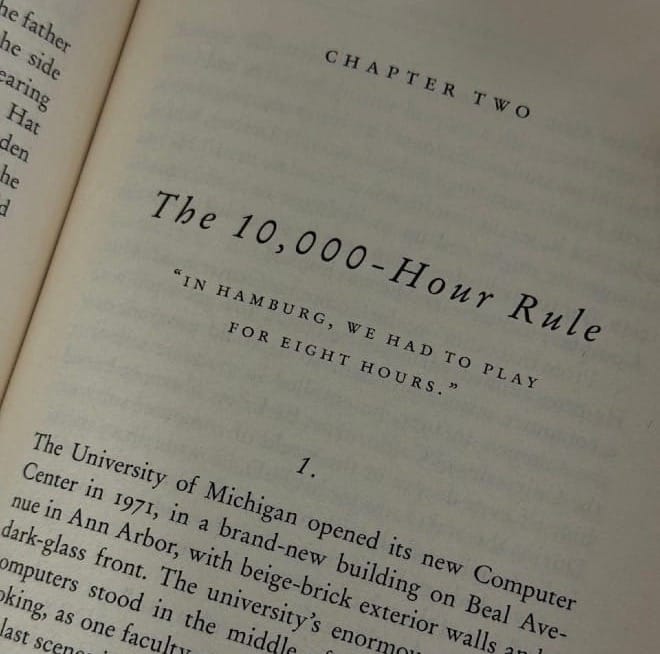How the 10,000-Hour Rule Can Help You Excel and Achieve Greatness – Outliers by Malcolm Gladwell

If you’ve ever wondered what separates the best from the rest, Malcolm Gladwell’s book Outliers offers a compelling answer—and it lies in something surprisingly within reach: practice.
In one of the most popular chapters of the book, titled "The 10,000-Hour Rule," Gladwell explores the fascinating idea that deliberate, consistent practice over time is the true key to success, not just talent or luck.

The 1990 Study That Changed Everything
The chapter highlights a groundbreaking study from 1990 by psychologist K. Anders Ericsson, who gathered a group of violin students from a music academy in Berlin. These students were divided into three categories based on ability: the best, the good, and the average.
What emerged from the research was a clear and powerful pattern:
- The best performers had practiced for more than 10,000 hours.
- The good performers had practiced around 8,000 hours.
- The average performers had practiced just over 4,000 hours.

The conclusion was clear:
Every top performer had practiced at least 10,000 hours, while none of the good or average performers had reached that mark.
Talent played a role, sure, but time invested in mastering a skill was the defining factor.
The Power of Hard Work
One quote from the chapter really stands out and has stuck with me:
"The thing that distinguishes one performer from another is how hard he or she works. That’s it. And what’s more, the people at the very top don’t work just harder or even much harder than everyone else. THEY WORK MUCH, MUCH HARDER."
I see this first hand in my own job. My boss, their boss, and even the C-level executives are not just sitting in meetings—they're putting in more hours, taking ownership, and going deeper into their craft than anyone else.
These are people who have been in the game for 20+ years, mastering their field day by day.
And that’s no accident.
That’s the 10,000-Hour Rule in action.
Real-Life Examples: Bill Joy and Bill Gates
Gladwell explores how legendary figures like Bill Joy and Bill Gates got their 10,000 hours in. Bill Joy, who later co-founded Sun Microsystems, got access to a computer lab at the University of Michigan and spent thousands of hours programming, well before most people had even seen a computer.
Bill Gates had early access to a computer terminal at a young age, and by the time he launched Microsoft, he had already passed that magic number.
The key insight here isn’t just that these individuals were smart or driven—it’s that they were lucky to find opportunities to practice early, and they took full advantage of them.
What This Means for Us
If you’re trying to master something—whether it’s coding, writing, painting, leading, or playing the violin—the formula isn’t a mystery.
You don’t need to be born a genius.
You just need to put in the time.
That’s the challenge and the gift of this chapter.
It tells us: if you want to be great, you must practice and put in 10,000 hours.
So wherever you are in your journey, remember: practice isn’t just helpful—it’s everything.
Hello there! Want to stay in the know and be the first to get access to the awesome newsletter?
You'll receive the latest news, updates, and exclusive content straight to your inbox. Don't miss out on this opportunity to be a part of our community!